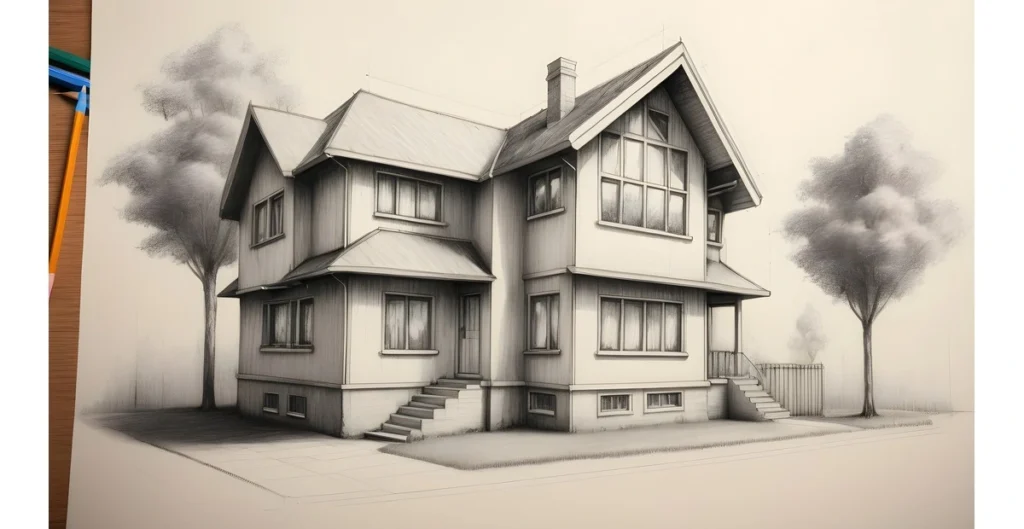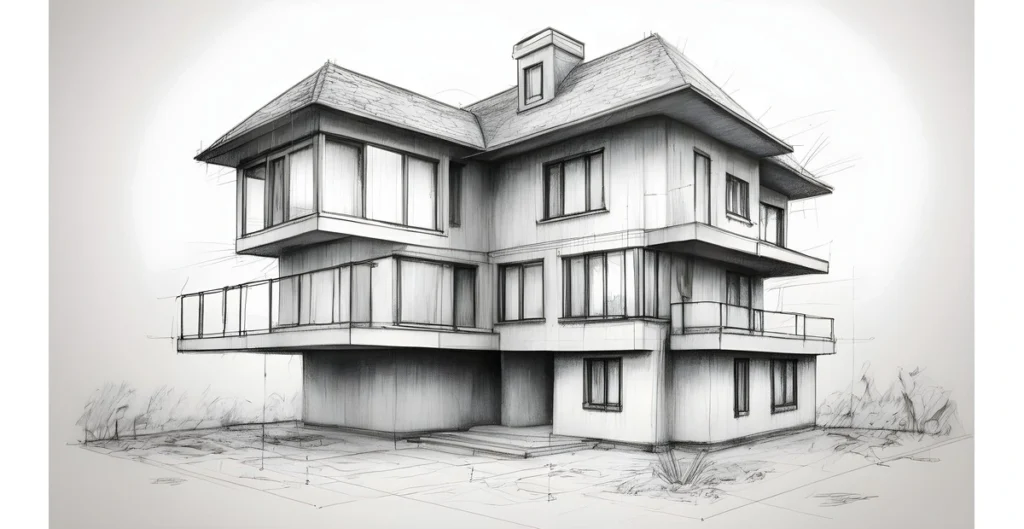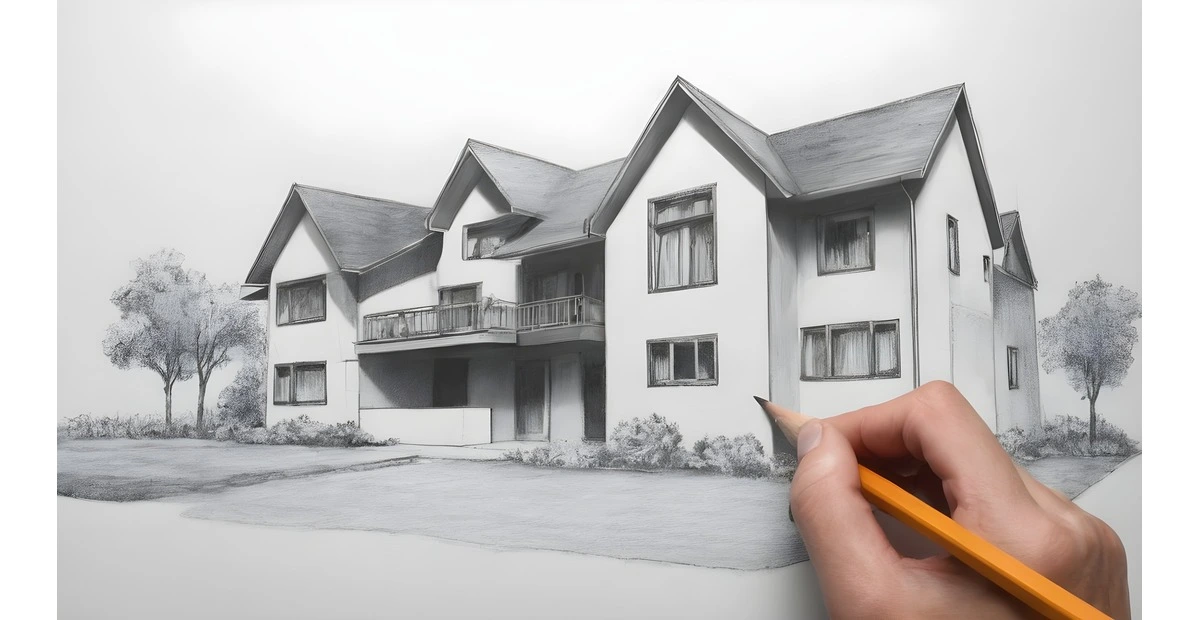As you drive through neighborhoods, you’ve likely pondered the typical Average height of house. Knowing the average dimensions is intriguing whether you’re house hunting or just curious. House height varies based on factors like when it was built, its floors, and the region. In this guide, discover common heights for one-story, two-story, and three-story homes, along with changes in ceiling standards over time. We’ll also explore average heights across the country. With this insight, you’ll better understand what to expect when exploring homes. Let’s dive into the numbers and uncover the average American home’s height!
Average Height of a Single Story House

The normal unmarried-story residence has an average height of around 9 to 12 feet.
Ceiling Height
The maximum commonplace ceiling peak is 8 feet, giving you masses of headroom without the gap feeling cavernous. Some homes go with 9-foot ceilings for an open, airy feel.
Also, Read the Article: How to Cover Artex Without Plastering
Exterior Wall Height
The exterior walls are normally around 8 to twelve inches thick to provide structural support and insulation. Add the ceiling peak, and you’ve got your general average residence peak.
Of course, bungalow and ranch-fashion houses may be on the shorter give up of the variety, even as greater spacious houses can attain up to 12 ft for a mainly roomy unmarried degree.
In the quit, ceiling peak comes all the way down to the private desire for the way open or comfy you need the gap to sense. But for a typical, well-proportioned single-story house, you may count on an average peak of 10 to 11 feet from the ground to the top of the roof.
Average Height of a Two-Story House
The regular two-tale residence is around 20 to 30 feet high, measured from the ground to the roof height. Of direction, the precise height can vary depending on the style of the home and roof layout.
For example, a Two-story Colonial fashion residence may be at the best of the variety in view that those homes frequently have a steeply-pitched roof. On the other hand, a Craftsman bungalow-story domestic normally has an extra gently sloping roof so it might likely be at the decrease given up of the average peak spectrum.
In the give-up phase, the height of your two-story house depends on what you locate most aesthetically appealing and appropriate to your community. But in standard, the purpose for a height that lets in well-proportioned rooms on each flooring, with ceiling heights of at least 8 feet. And be sure to check your local construction codes for any peak restrictions which could be practiced.
With a few smart design choices, you could have a two-tale home that’s functional and livable even as nonetheless retains a snug scale. Focus on what truly matters – the indoor area and layout – rather than going overboard on severe heights.
Average Height of a Three-Story House

The common peak of a standard 3-story residence inside the U.S. Is around 35 to 45 feet from the floor ground to the roofline. The actual interior ceiling height of every floor may be slightly much less, around 9 to 10 feet in step with the story, depending on the fashion of the home.
Newer houses might also have higher ceilings, up to 12 feet according to the ground, for an airier, extra spacious experience. The universal top is also affected by the pitch or slope of the roof. A steeper roof, like a Gothic or Victorian fashion, will make the house appear taller than a home with a shallow-pitched hip roof.
In some regions, local construction codes may put height regulations on homes, mainly if located in a historic district. The average 3-story house, though, needs to fall nicely within trendy height limits for most residential neighborhoods.
Factors That Impact House Height
The top of a house is decided with several key elements. Local construction codes set up maximum top regulations, frequently primarily based on zoning legal guidelines and fireplace protection. The architecture and design style you choose also perform a function. A sprawling ranch house will usually be shorter than a Victorian with turrets and towers.
Your lot length and backyard space are other concerns. You’ll need a greater compact residence if you have a small lot. Larger lots provide more flexibility. The number of tales you want is an obvious component. A Two-tale house might be taller than a single-stage residence, all else identical.
The roof type and pitch selected immediately impact the ordinary top. A steeply-pitched roof like a gambrel or gable will make a residence appear taller than a roof with a shallow pitch. Dormers, cupolas, and chimneys can also increase the height.
In the stop, deciding on a housetop comes down to balancing your needs and wants with what’s allowed and sensible for your region and lot. Think approximately how excessive is excessive enough for what you need, without being too high in your tastes or network requirements.
How Tall Is the Average House?
The typical single-own family home in the U.S. Stands around 9 or 10 feet tall. This can also appear on the shorter facet however it permits widespread 8-foot ceilings on the primary ground and within the basement. Two-story homes are common and average around 20 to 25 ft in the top to accommodate another full floor of dwelling space. Some houses feature better-vaulted ceilings on the primary floor, which could add several toes to the general peak.
Of course, residence sizes and styles vary in special components of the US primarily based on weather, terrain, and private tastes. Homes are often larger within the Southern and Western U.S., at the same time as smaller in the Northeast. No count wherein you live even though, the maximum commonplace residence height’s purpose is to strike a balance between maximizing rectangular photos and minimizing heating/cooling costs. For the average property owner, a house around 9 to 25 ft excessively fits the invoice.
FAQs: What Is the Average Height of House?
The common top of a standard single-family home inside the U.S. Is around 8.5 feet for each ground. So, a standard two-story residence might have ceilings around 17 feet high, whilst a three-story home may attain 25 feet or higher. Of path, ceiling heights can vary based on the fashion of the home and personal preference. Some humans choose better ceilings, up to ten or 12 feet in step with the floor, to create an open, airy experience.
Conclusion
So there you’ve got it, the standard heights for homes and rooms. While there may be a variety, it is important to realize the averages to get a sense of what is common. Next time you are house hunting or transforming, maintain those popular dimensions in your thoughts. But recall, you can usually customize for your desires and choices. The key is ensuring you have enough headroom and area to stay easily. At the quiet of the day, it is your private home – make it give you the desired results! Whether you pass for the same old top or do your thing, experience the manner of creating your best living space.

